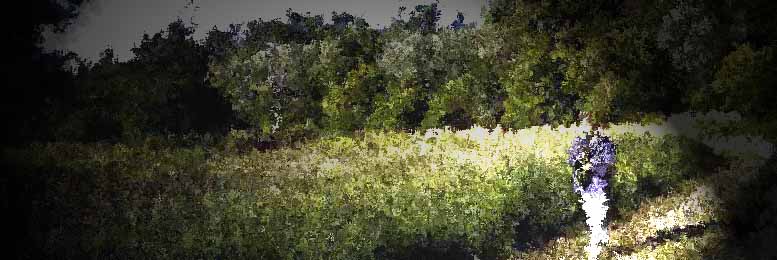13.4.2008 | 02:27
Græna beltið
Eins og víða um heiminn hafa áhyggjur af skipulagsmálum nokkuð sett svip sinn á borgir og bæ hér í Kanada. Borgir hér, s.s. Toronto hafa verið eins og ég hef stundum tekið til orða, líkt og Reykjavík á sterum. Hér vill fólk búa í einbýlishúsum, gjarna með smá garðbletti, en þó hafa fjölbýlishús og síhækkandi blokkir sett æ meiri svip á borgina.
Almenningssamgöngur eru líka algengt umræðuefni hér, 2. neðanjarðarlestarlínur eru hér og nokkur fjöldi sporvagna, sem og strætisvagna.
Eitt af þeim ráðum sem hefur verið beitt hér undanfarin ár til að hafa áhrif á skipulagið, er svokallað "grænt belti". "Græn belti" eru svæði sem hafa verið "friðuð" í kringum borgir eða þéttbýli, rétt eins og Toronto, eða GTA (Great Toronto Area). Þessum svæðum er ætlað að marka borgunum ákveðin svæði, þær geti ekki þanist út endalaust og auka landnýtingu innan "græna beltisins".
Það var ágætis grein um "græna beltið", fyrir nokkrum dögum í Globe and Mail.
En virkar "græna beltið"?
Ég myndi segja það. Á þeim tíma sem ég hef búið hér hefur Toronto breytt um svip. Háhýsum hefur fjölgað gríðarlega, bæði "downtown" og svo sömuleiðis á "subway línunum", ef svo má að orði komast, en áberandi er hve mörg háhýsi eru byggð í nágrenni neðanjarðarlestastöðva.
En það eru alltaf einhverjir sem tapa. Þeir sem tapa mestu í þessu tilfelli, eru líklega bændur, en möguleiki þeirra til að selja landareignir sínar háu verði, eru verulega skertar. Það er enda rætt um það að bæta þeim það tjón, í það minnsta að einhverju marki, og getur það varla talist ósanngjarnt, ef halda á þessari stefnu til streytu. Þessi ráðstöfun er í raun hálfgerð eignaupptaka, það er hún skerðir verulega frelsi bænda til að ráðstafa eignum sínum.
En hverjir hagnast á þessu fyrirkomulagi?
Í fyrsta lagi eru það almennir húseigendur, rétt eins og við hér að Bjórá. Hús og landareignir haldast í háu verði, þar sem framboð á slíku er verulega takmarkað, í og við nágrenni borgarinnar. Því hækkar verð á eignum inn í borginni, þar sem eini möguleikinn til að byggja nýtt hús, er að kaupa eldra og rífa.
Allar lóðir sem losna þegar verksmiðjur eða önnur slík starfsem flyst í burtu, er það dýrt að það fer undir háhýsi, eða í það minnst "raðhús", sem þó líta nokkuð öðruvísi út en á Íslandi. Algengt er að þau seu 4ja hæða og örmjó, til að nýta lóðirnar.
En borgin hagnast líka. Fleiri skattgreiðendur á sama svæði, landnýting eykst, almenningssamgöngur verða hagstæðari, þar sem massinn er meir og nýting eykst. Þjónustuþörfin eykst vissulega líka, en ekki í samræmi við fólksfjöldann.
En mest þéttingin hefur orði á miðborgarsvæðinu, eitthvað sem enginn virðist mega heyra á minnst í Reykjavík.
En nokkrir punktar úr greininni:
"A study being released today says the zone of protected land around Toronto is not only one of the largest greenbelts in the world, but is also superior to ones in North America and Europe.
"Ontario's greenbelt is positioned to be the most successful and most useful greenbelt in the world," concluded the study, compiled by the Canadian Institute for Environmental Law and Policy, a Toronto-based think tank."
""My goal and my mantra that drives me is that we're going to be doing nothing but expanding the greenbelt," Municipal Affairs Minister Jim Watson said in an interview.
With that goal in mind, the government is embracing municipalities that are interested in having more land covered by the greenbelt, established in 2005 by the Ontario government. It intends to issue a directive by July detailing the steps necessary to have the province agree to expand protected areas.
Guelph and Oakville have said they're interested, and other municipalities have informally approached the government, although Mr. Watson was unwilling to identify them.
The greenbelt includes the world-renowned Niagara Escarpment, a ribbon of limestone cliffs that snakes across Southern Ontario from the Niagara Falls area to Tobermory on Georgian Bay, along with farmland and an expanse of bucolic rolling countryside north of Toronto known locally as the Oak Ridges Moraine, created by debris deposited by glaciers as they melted at the end of the last ice age.
Although urban sprawl and the loss of productive farmland are occurring almost everywhere in the world, greenbelts are a "relatively rare" tool for dealing with the problem, said Maureen Carter-Whitney, a researcher for the institute who conducted the study. It was commissioned by the Friends of the Greenbelt Foundation, a non-profit organization funded by the province that was established to promote agriculture in the greenbelt and safeguard its ecological features. Ms. Carter-Whitney's comparison gave high marks to Ontario's greenbelt because it has tough legislative protection, strong support from government, and covers a large area.
One concern with greenbelts is that they could promote even greater sprawl if development hops over the protected zone, creating longer commutes and wasting just as much farmland. Those who back greenbelts hope they encourage more efficient and intensive land use within current urban boundaries.
In Toronto's case, such leapfrogging is happening as development moves north to areas of Simcoe County around Barrie, but the trend has been observed frequently enough elsewhere to be viewed as a legitimate threat to this system of land conservation."
"Farmers are potential losers from greenbelts because developers won't pay top dollar for tracts that can't be converted to urban uses, yet they have to cover most of the costs of preserving land for society.
The study says farmers should be compensated "financially for implementing environmental stewardship activities that benefit everyone."
As well, governments need to encourage the consumption of food grown in the greenbelt through farmers markets and promoting crops that appeal to Canada's growing visible minority population."
Flokkur: Stjórnmál og samfélag | Facebook

Bæta við athugasemd [Innskráning]
Ekki er lengur hægt að skrifa athugasemdir við færsluna, þar sem tímamörk á athugasemdir eru liðin.